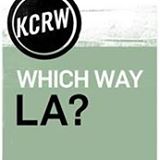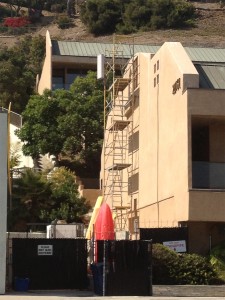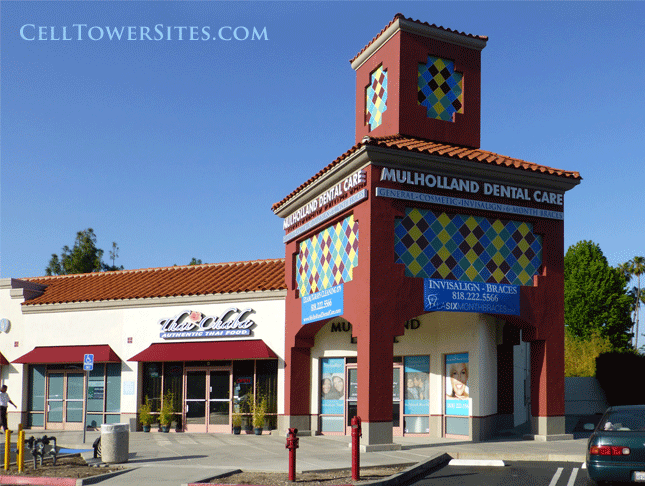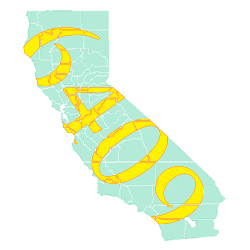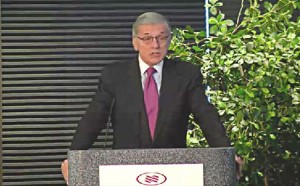 (Updated 5:29 p.m. PDT to include the prepared remarks of the Chairman.)
(Updated 5:29 p.m. PDT to include the prepared remarks of the Chairman.)
FCC Chairman Tom Wheeler presented the keynote speech on October 1, 2014 at the National Association of Telecommunications Officers and Advisors (NATOA.ORG) Annual Conference in St. Paul, Minnesota.
The running time of the lecture is just under 30 minutes, and this is a ‘must listen’ lecture about issues important to the Commission, the telecom industry, and governments.
For those of you who are interested in the pending FCC Report and Order on Broadband Deployment (the ‘6409(a)’ NPRM) start at 20:35. That portion is about 1 minute long, but contains very interesting clues as to how the Commission will address the comments received from the industry and governments and frame the pending rules.
Chairman Wheeler’s prepared comments are presented below the audio link.
Jonathan Kramer
(From: http://www.fcc.gov/document/remarks-fcc-chairman-tom-wheeler-natoa-annual-conference)
Remarks of FCC Chairman Tom Wheeler
National Association of Telecommunications Officers and Advisors
Annual Conference
October 1, 2014
Thank you, Tony Perez, for that introduction. I join in congratulating the winners of NATOA’s Community Broadband Awards.
It’s great to be at the NATOA meeting here in Minnesota. Perhaps that explains why as I look out across this assemblage, all the women are strong, the men are good-looking, and the policy proposals above average.
A native Minnesotan, in fact, provides us with the intellectual foundation for our discussion today. It was the son of Hibbing, Minnesota, Bob Dylan who wrote, “You better start swimming or you’ll sink like a stone, for the times they are a-changing.”
That is the challenge we all face. There is no doubt that high-speed broadband – wired and wireless – is a-changing everything. Those who embrace these changes will help write the future. Those who don’t will…well…sink like a stone.
NATOA and the FCC are swimming to the common goal of making sure that communities across America – large and small – have access to robust broadband networks that deliver the benefits of broadband connectivity to all citizens.
But you may have noticed that not everyone is swimming alongside that effort. There are those who seek to block the competitive forces that can produce faster, cheaper, better broadband; those who make it difficult to build out the infrastructure necessary for the broadband future; and those with which both you and we have to contend that would use changes in technology as an excuse to sidestep the responsibilities network operators have always had to their users.
Today, I would like to visit about our responsibility to overcome this resistance and ensure that our nation has the networks necessary for the jobs, economic growth, and quality of life that will determine our nation’s place in the 21st century. Yes, that is a dramatic statement; yes, it is that important; and, yes, I know it is easier to say than to do.
You, in your positions in your communities, and my colleagues and I, in our positions at the FCC, have responsibilities, not just to the consumers and networks of today, but also to the consumers and networks of tomorrow. Here is the reality confronting us:
- We need faster networks in more places. I don’t know about you, but I’m tired of seeing the charts of where the U.S. ranks in comparison to the broadband speeds of other nations. Table stakes for the 21st century is 25 Mbps, and winning the game means that all consumers can get at least 100 Mbps – and more.
- Competition is the best way to achieve those goals. Unfortunately, today there is an inverse relationship between competition and throughput. Three-quarters of American homes have no competitive choice at 25 Mbps. That includes almost 20 percent who have no option at all at those speeds!
- Wireless is an increasingly critical broadband pathway of the future. The 21st century will be defined by the networks that marry the ever-increasing computing power of Moore’s Law with the invisible delivery of wireless spectrum. Our generation has been self-congratulatory about the connection of people – seven billion wireless subscriptions in a world of seven billion people is impressive – but you and we must plan on connecting 50 billion inanimate devices made smart by Moore’s Law.
- Openness is the key to networks delivering on their possibilities. Blocking, discriminating, or degrading service for economic gain is contrary to the promise of broadband networks. Yet we have no protections in place to assure that kind of openness. We must have rules that will establish that an open Internet is the sine qua non of broadband.
A minute ago I spoke of the responsibilities of networks. For the better part of a century, there has been a set of principles that has defined the relationship between those who build and operate networks and those who use them. I call this the “Network Compact” and our goal as regulators and policy makers is to assure that these principles continue to define that relationship into the future. These principles include:
- Access – both to networks and on networks,
- Interconnection – by definition a network is a series of connections; in the broadband world, the Internet isn’t a thing, but a connected collection of networks,
- Consumer protection – technology has pushed the laws of physics, but nothing has changed the laws of human nature or economics, and consumers must be protected from exploitation,
- Public safety – we’ll talk more about this in a minute, but it must be the underlying deliverable of all networks, and
- National security – in a world in which networks are now attack vectors, we must have secure and safe connectivity.
There are those who argue that the move from analog networks to IP networks changes these principles. They are wrong. The form these responsibilities take may change in an IP world, but the principles do not – and should never – go away.
As we transition to an all-IP world, the challenge confronting those of us in this room is how do we preserve these values that we have come to expect from our networks, while seizing the opportunities that our new networks promise? So let’s address these issues head-on – starting with competition.
Competition works, and how we behave determines whether there will be competition. The existence of four national wireless carriers, for instance, is an important national priority and we worked to protect that reality. Similarly, there cannot be effective competition in wireless without new spectrum and without assuring that the most advantageous low-band spectrum is available to all competitors. We are doing both of those as well.
The advantages of competition are so obvious and ingrained in the American psyche that many local communities have stepped up to facilitate it where the private sector has not. Communities are listening to the needs of their citizens and enterprises, engaging community stakeholders, and focusing on delivering competitive broadband services to respond to those needs. As you know, two communities – Wilson, NC and Chattanooga, TN – have petitioned the FCC to preempt the laws enacted by state legislatures that prohibit them from expanding their community-owned broadband networks. There are currently laws in 19 states that impose restrictions of one kind of another on such local decision-making.
We will make our decision on those petitions on the record and on the merits. I am not going to comment on them any further.
However, I do encourage you to consider how local choice and competition can increase the broadband opportunities for your citizens. I love the story of Lafayette, Louisiana where the local incumbent fought the city’s fiber network tooth and nail, bringing multiple court challenges and triggering a local referendum on the project. Thankfully, none of the challenges managed to prevent deployment – sixty-two percent of voters approved of the network in the referendum, and the Louisiana Supreme Court unanimously sided with the city – but they did delay deployment almost three years. When the network was finally built, the community experienced the benefits of competition, as the local cable operator decided to upgrade its network. Local choice and competition are about as American as you can get.
Those American principles can play an important and essential role in assuring America’s future.
Here’s where you and other local officials become critically important. If the infrastructure necessary to build out both wired and wireless broadband networks doesn’t receive the prioritization that it warrants as a major national undertaking, then all the efforts to achieve faster, cheaper, better broadband service that will enhance our nation’s competitiveness, create quality jobs for our fellow citizens, and introduce services that will redefine both our commerce and our culture will be for naught.
I know this is often a zoning matter in which you are as much an observer as we are. In those instances where some of you may have a role, however, I encourage you to be pro-active. In those instances where it is others who have the authority, I urge you to stand up for your telecommunications responsibilities. I understand the very real and very strong Not-In-My-Backyard sentiments. Everyone wants cellphone service but no one wants cellphone antennas in their neighborhood. Everyone wants access to state-of-the-art transmission service, but no one wants the neighborhood streets dug up. It reminds me of another folk song: “Everyone wants to go to heaven, but nobody wants to die.”
However, we’re talking about a national priority; about the maintenance of economic leadership; about America’s continuing to be the home of innovation. We must find ways to enable the extension and expansion of broadband infrastructure. Local officials with permitting authority have a special obligation to both their own communities and to the larger society. It is simply impossible to have the connectivity our nation requires without the necessary infrastructure. While there is an understandable desire to engage in cognitive dissonance of wanting connectivity but not its consequences, as policy makers we must resist within reason such myopia.
In that regard, we must build on and expand the creative thinking that has been the hallmark of the good work many of you have done to facilitate advanced broadband builds around the country. It’s great that NATOA has developed best practices on tower siting and is updating those practices. And as I understand it, there is also a guide on rights of way issues, but it’s 12 years old. Things have changed a bit in the last dozen years. I encourage you to update your rights of way guide.
You have the ability to develop national best practices that embrace strategies that have been shown to work in today’s technological and economic environments – strategies that embrace new technology and new ideas to facilitate the timely deployment of wired and wireless broadband. There is a reason Google Fiber developed a “City Checklist” to aid in determining where to invest in gigabit fiber. It contains simple things, like timely and accurate information about and access to poles and conduit. These low-cost steps are relevant to all broadband providers; we must bring those insights to all localities.
At the FCC, we will use our authority to attack the broadband deployment challenge. We will work with you, so that national best practices are included in our Agenda for Broadband Competition…the ABCs of consumer choice in the 21st century. We will also move on our own authority. Last Friday I proposed to my colleagues a new set of federal policies on the siting of wireless facilities. This proposal will take concrete steps to immediately and substantially ease the burdens associated with deploying wireless equipment – particularly for collocations and deployments of small-cell systems that can be installed unobtrusively on utility poles, buildings, and other existing structures. At the same time, my proposal preserves the front-line authority of local and Tribal governments to determine which structures are appropriate for wireless deployments, as well as authority to enforce building codes, electrical codes, laws related to health and safety, and to require companies to use camouflage or concealment designs. The Commission will consider this item at our next open meeting on October 17.
There is another component of our broadband responsibilities, and that is video programming. We’ve been hearing a lot lately that access to video is necessary for broadband deployment because consumers increasingly watch video online and that translates into more demand for video-quality broadband. So if we can make it easier for video choices to come to communities, we should be able to incent more broadband competition as a result.
Broadband becomes more economically viable, we are told, when it is bundled with video services. In a perverse way, then, how localities handle video competition can determine whether they will have broadband competition.
I want to close my remarks by emphasizing one other place we must work together – public safety.
Robust, accessible 911 service is central to our shared public safety missions.
The transition to all-IP communications raises new challenges for 911.
We are used to thinking about 911 outages as a result of acts of nature: a hurricane, a tornado, vast flooding.
But there is a new threat. The emerging Next Generation 911 system is more complex than the legacy 911 system and relies more extensively on infrastructure, resources, and relationships that are multistate or national in scope. It is supported by a larger number of service providers, including new entrants that are offering new, niche functionalities.
Innovation is good, and we want NG 911 to support new forms of emergency communications.
But the creation of new, complex systems where no one is responsible, and where the system as a whole lacks reliability and resiliency is not acceptable.
The threat is real….and growing.
In April, citizens in seven states lost access to 911 for six hours…six hours! More than 5,600 911 calls did not get through because of a software glitch in an outsourced database!
This August, there was a 911 outage in one of the nationwide wireless networks, and there was an outage in Vermont that knocked out 911 service statewide for nearly an hour.
The fact that these outages occurred, and the common issues they raise, are evidence of the challenge we face, and suggest that we are at risk of experiencing far worse failures if we don’t take action now.
We recognize that states and local governments also have long-standing and significant responsibility for 911 service within their jurisdictions. We believe the best approach is a partnership between the FCC and state and local authorities to ensure that there are no gaps in the reliability of the entire NG911 system. The FCC’s staff has worked closely with state and local officials to investigate these outages, and, at our open meeting later this month, will be presenting the findings of this investigation, as well as recommendations for concrete steps to promote end-to-end reliability and accountability of the 911 system.
The critical point is this: neither we at the federal level nor you at the state and local level have the ability to ensure end-to-end 911 reliability on our own – we must work together.
We must work together, not just on 911, but on all the topics I’ve discussed today.
When competitive broadband options don’t exist, let’s work together to create an environment that encourages investment to switch-on America’s competitive genius.
When there is no broadband availability at all, let’s work together to get infrastructure deployed by any and all entities willing to step up to meet the challenge; and
When providers begin to retire legacy networks for newer technologies let’s work together to make sure that the expectations of consumers and businesses continue to be met, including access to 911.
For the times they are a’changing. Let’s work together to embrace the new opportunities and build a better tomorrow.
Thank you.
